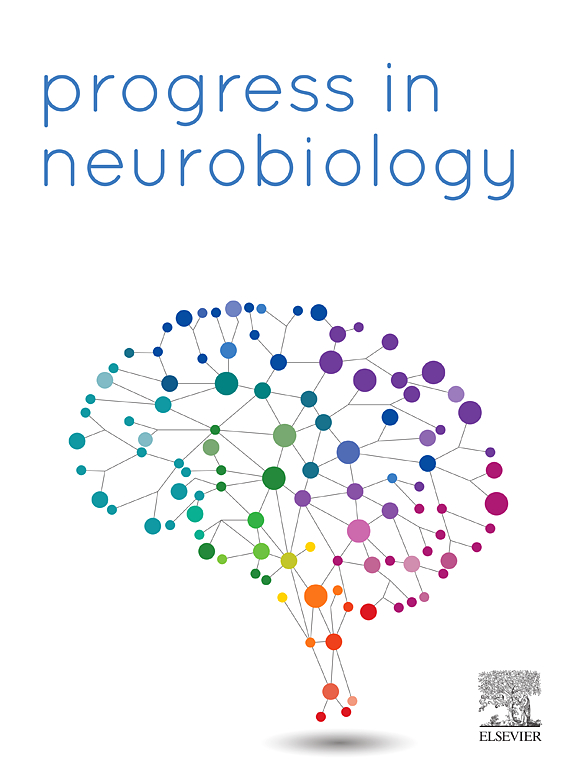甘氨酸门控的突触外NMDARs在谷氨酸溢出驱动的突发放电中激活
IF 6.1
2区 医学
Q1 NEUROSCIENCES
引用次数: 0
摘要
黑质致密部多巴胺神经元的突发放电是与运动启动时间相关的关键生物标志物。这种相位变化是由NMDARs的强直性激活产生的,但突触NMDARs和突触外NMDARs在爆发的点燃中各自的作用以及它们的激活水平仍然未知。利用青春期大鼠的离体电生理记录,我们证明了突触外NMDARs是突发放电的主要驱动因素。这一受体库是在强烈的突触活动中通过谷氨酸溢出而募集的,需要与NMDAR共激动剂甘氨酸结合才能完全激活。仅在d -丝氨酸的支持下激活突触NMDARs不足以产生爆发。值得注意的是,突触和突触外的NMDARs具有相同的亚基组成,但受不同的共激动剂调节。NMDAR的位置和共激动剂的区域化而不是NMDAR亚基组成是爆发产生的基础,可能作为理解多巴胺在信号运动中的生理作用的指导。本文章由计算机程序翻译,如有差异,请以英文原文为准。
Glycine-gated extrasynaptic NMDARs activated during glutamate spillover drive burst firing in nigral dopamine neurons
Burst firing in substantia nigra pars compacta dopamine neurons is a critical biomarker temporally associated to movement initiation. This phasic change is generated by the tonic activation of NMDARs but the respective role of synaptic versus extrasynaptic NMDARs in the ignition of a burst and what is their level of activation remains unknown. Using ex vivo electrophysiological recordings from adolescent rats, we demonstrate that extrasynaptic NMDARs are the primary driver of burst firing. This pool of receptors is recruited during intense synaptic activity via spillover of glutamate and require the binding of NMDAR co-agonist glycine for full activation. Basal synaptic transmission activating only synaptic NMDARs with the support of D-serine is insufficient to generate a burst. Notably, both synaptic and extrasynaptic NMDARs share the same subunit composition but are regulated by distinct co-agonists. Location of NMDARs and regionalization of co-agonists but not NMDAR subunit composition underly burst generation and may serve as a guideline in understanding the physiological role of dopamine in signaling movement.
求助全文
通过发布文献求助,成功后即可免费获取论文全文。
去求助
来源期刊

Progress in Neurobiology
医学-神经科学
CiteScore
12.80
自引率
1.50%
发文量
107
审稿时长
33 days
期刊介绍:
Progress in Neurobiology is an international journal that publishes groundbreaking original research, comprehensive review articles and opinion pieces written by leading researchers. The journal welcomes contributions from the broad field of neuroscience that apply neurophysiological, biochemical, pharmacological, molecular biological, anatomical, computational and behavioral analyses to problems of molecular, cellular, developmental, systems, and clinical neuroscience.
 求助内容:
求助内容: 应助结果提醒方式:
应助结果提醒方式:


